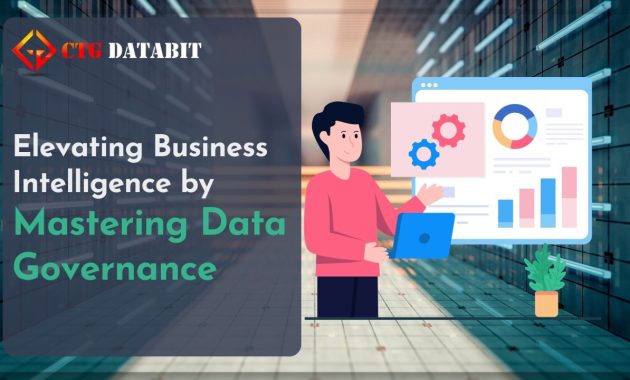
Mastering 9 Business Intelligence Tools To Stay Competitive: A Comprehensive Guide
In today’s data-driven world, businesses are drowning in information. The key to survival and success lies not just in collecting data, but in understanding it. This is where business intelligence (BI) tools come into play. They transform raw data into actionable insights, enabling informed decision-making and strategic advantage. This comprehensive guide explores nine powerful business intelligence tools, equipping you to stay competitive in a rapidly evolving market.
The competitive landscape demands agility and foresight. Companies that can quickly analyze data, identify trends, and adapt their strategies are those that thrive. Business intelligence tools are the engines driving this transformation. They provide the necessary framework for data analysis, reporting, and visualization, empowering businesses to make data-backed decisions. These tools aren’t just for large corporations; they are increasingly accessible and valuable for businesses of all sizes.
Understanding the Power of Business Intelligence
Business intelligence is more than just dashboards and reports. It is a strategic approach to data analysis, encompassing the technologies and processes used to collect, analyze, and present business information. The goal is to provide decision-makers with the insights they need to make informed choices.
Effective BI implementation can lead to significant improvements. These include:
- Improved decision-making: Data-driven insights lead to more informed choices.
- Increased efficiency: Automate reporting and analysis, saving time and resources.
- Enhanced profitability: Identify opportunities for revenue growth and cost reduction.
- Better customer understanding: Gain insights into customer behavior and preferences.
- Competitive advantage: Stay ahead of the curve by understanding market trends.
Essential Business Intelligence Tools: A Deep Dive
The market offers a wide range of business intelligence tools, each with its strengths and weaknesses. This section highlights nine of the most popular and effective options, categorized for clarity.
Data Visualization and Reporting Tools
These tools excel at presenting data in an accessible and understandable format, turning complex information into clear visuals.
Tableau
Tableau is a widely recognized leader in the business intelligence space. Its intuitive interface and powerful visualization capabilities make it a favorite among analysts and business users alike. Tableau allows for the creation of interactive dashboards and reports, enabling users to explore data in depth. Its drag-and-drop functionality simplifies the process of data analysis and visualization. Tableau is known for its ability to connect to a wide variety of data sources.
Microsoft Power BI
Power BI is Microsoft’s business intelligence offering, and it’s tightly integrated with the Microsoft ecosystem. It offers a user-friendly interface, a robust set of features, and competitive pricing. Power BI’s strength lies in its ease of use and its ability to integrate with other Microsoft products. It is particularly well-suited for businesses that already use Microsoft Office and other Microsoft tools. Power BI offers strong data modeling capabilities and supports a wide range of data connectors.
Qlik Sense
Qlik Sense is another powerful business intelligence platform known for its associative data modeling engine. This engine allows users to explore data in a more intuitive way, uncovering hidden relationships and insights. Qlik Sense offers a modern interface and a strong focus on self-service analytics. It’s a great choice for businesses that want to empower their users to explore data independently. Qlik Sense’s associative engine helps users quickly identify relevant information.
Data Warehousing and ETL Tools
These tools are designed to manage and prepare data for analysis. They handle the processes of extracting data from various sources, transforming it, and loading it into a central data warehouse.
Amazon Redshift
Amazon Redshift is a fully managed, petabyte-scale data warehouse service offered by Amazon Web Services (AWS). It’s designed for high-performance analytics and is well-suited for handling large volumes of data. Redshift allows businesses to store and analyze vast amounts of data quickly and efficiently. It integrates seamlessly with other AWS services, providing a complete data analytics solution. Amazon Redshift is a cost-effective option for organizations with significant data warehousing needs.
Google BigQuery
Google BigQuery is a serverless data warehouse that allows businesses to analyze massive datasets. It offers a pay-as-you-go pricing model, making it a cost-effective solution for organizations with fluctuating data volumes. BigQuery’s strength lies in its scalability and its ability to handle complex queries. It integrates well with other Google Cloud Platform (GCP) services. BigQuery simplifies data warehousing with its serverless architecture.
Snowflake
Snowflake is a cloud-based data warehouse platform that offers a flexible and scalable solution for data storage and analysis. It supports a wide range of data types and can handle both structured and semi-structured data. Snowflake’s architecture separates compute and storage, allowing for independent scaling. This provides businesses with greater control over their costs and performance. Snowflake is known for its ease of use and its ability to handle complex analytical workloads.
Advanced Analytics and Data Science Tools
These tools provide more advanced analytical capabilities, including statistical analysis, predictive modeling, and machine learning.
SAS Business Intelligence
SAS is a long-standing leader in the business intelligence and analytics space. Its comprehensive platform offers a wide range of capabilities, from data integration and warehousing to advanced analytics and reporting. SAS is known for its robust statistical analysis capabilities and its ability to handle complex analytical projects. SAS is a powerful tool for organizations that need advanced analytical capabilities. It offers a wide range of features for data mining and predictive modeling.
IBM Cognos Analytics
IBM Cognos Analytics is a comprehensive business intelligence platform that offers a wide range of features, including data discovery, dashboards, reporting, and advanced analytics. Cognos is known for its strong reporting capabilities and its ability to handle complex data models. It’s a good choice for organizations that need a robust and scalable BI solution. IBM Cognos Analytics provides a user-friendly interface and supports self-service analytics.
SAP BusinessObjects
SAP BusinessObjects is a comprehensive business intelligence suite designed for enterprise-level organizations. It offers a wide range of tools for data analysis, reporting, and visualization. SAP BusinessObjects is known for its strong integration with SAP systems and its ability to handle large volumes of data. It is a good fit for organizations that use SAP ERP systems. SAP BusinessObjects provides a comprehensive set of features for data analysis and reporting.
Choosing the Right Tools for Your Business
Selecting the right business intelligence tools requires careful consideration of your specific needs and goals. Here’s a step-by-step approach:
- Assess your needs: Identify your business goals and the types of data you need to analyze.
- Evaluate your data sources: Determine where your data resides and how it is structured.
- Consider your budget: Set a realistic budget for software, implementation, and training.
- Evaluate the tools: Research different business intelligence tools and compare their features, pricing, and ease of use.
- Conduct a pilot project: Test the tools with a small dataset to see how they perform.
- Choose the right solution: Select the tool that best meets your needs and budget.
- Implement and train: Implement the tool and train your employees on how to use it.
The Future of Business Intelligence
The future of business intelligence is bright, with several key trends shaping the industry. These include:
- Artificial intelligence (AI) and machine learning (ML): AI and ML are being integrated into BI tools to automate tasks, provide predictive insights, and enhance decision-making.
- Cloud-based solutions: Cloud-based BI platforms are becoming increasingly popular due to their scalability, flexibility, and cost-effectiveness.
- Self-service analytics: Businesses are empowering their users to analyze data independently, reducing the reliance on IT departments.
- Data democratization: Making data accessible to everyone in the organization, regardless of their technical expertise.
- Focus on data governance: Ensuring data quality, security, and compliance.
As technology continues to advance, business intelligence tools will become even more powerful and accessible. Businesses that embrace these tools and leverage data effectively will be well-positioned to stay competitive in the years to come. Investing in the right business intelligence tools is a strategic move. It can transform data into a powerful driver of growth and innovation. The ability to harness the power of data is no longer a luxury; it is a necessity for survival. The right tools will help you gain a significant advantage. It will also allow you to stay competitive in your industry. The effective use of business intelligence tools is essential for modern businesses. They are crucial for making informed decisions and gaining a competitive edge.
[See also: Related Article Titles]

